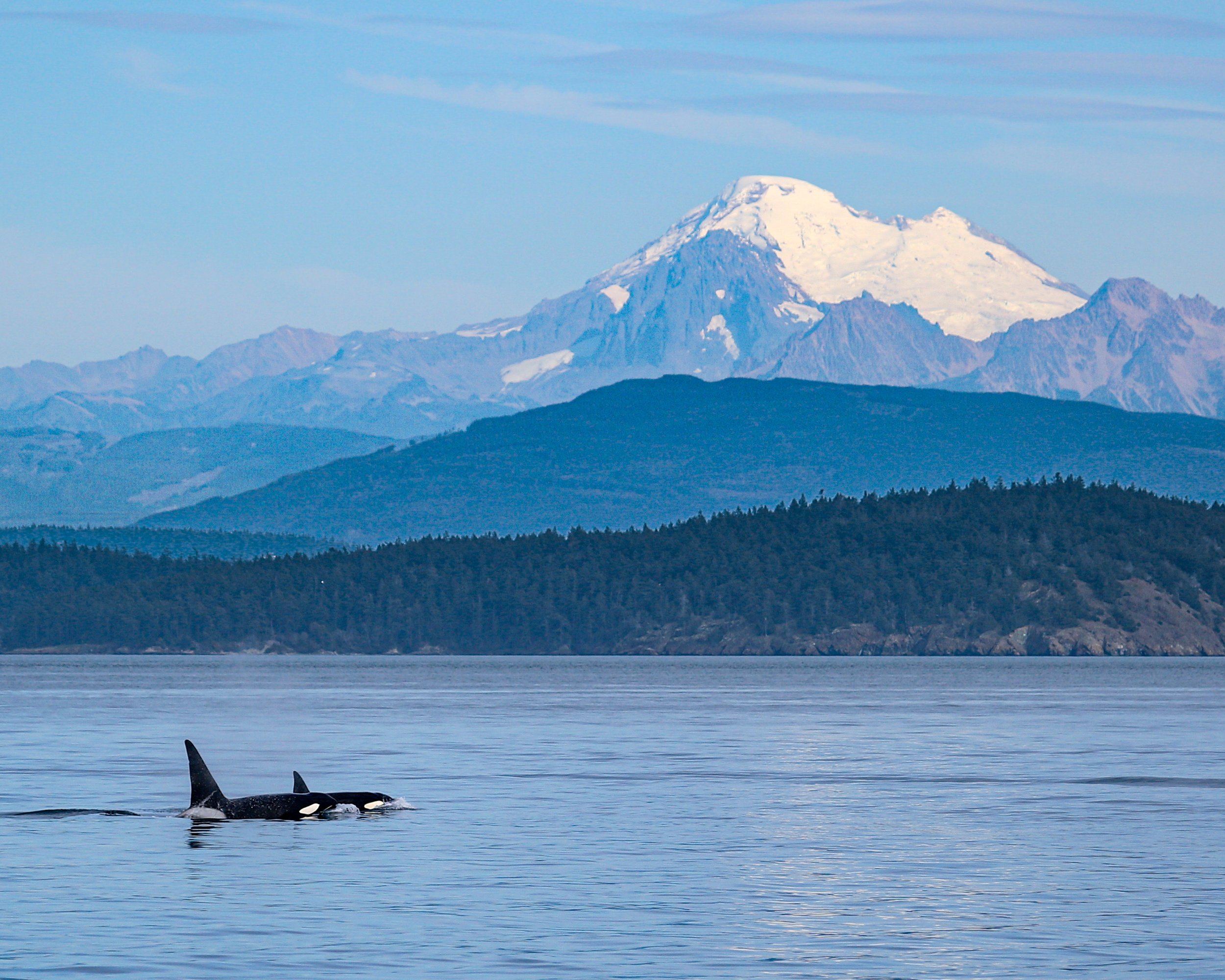
The Salish SEa
The Salish Sea covers nearly 7,000 square miles (18,000 sq. km), and includes the inland waters of Washington and British Columbia such as Puget Sound, the Strait of Juan de Fuca, and the Strait of Georgia. These interconnected waterways are home to 37 species of mammal, 172 species of bird, 253 species of fish, 2 species of reptile, and 3,000+ species of invertebrates (Gaydos & Pearson 2011).
The term “Salish Sea” was coined by marine biologist Burt Webber in 1988, but not formally adopted by the governments of Washington and British Columbia until 2009. It is named for the Coast Salish people who have called the region home since time immemorial. While the name itself is relatively new, the Salish Sea is roughly 15,000 years old, carved by glaciers and filled with saltwater when the glaciers retreated.
Year-Round Whale Watching
Unlike many whale watching destinations where the viewing season lasts just a few months, the Salish Sea is home to whales all year long. As seasons change, so too do the whales you’re most likely to encounter, and some PWWA operators offer tours during every month of the year. Click here to learn more about the different whale species found throughout the Salish Sea and its neighboring waterways.
BEAUTY & BIODIVERSITY
The cold, nutrient-rich waters of the Salish Sea are constantly moving and mixing with the tides, creating vibrant habitat for thousands of species of invertebrates, fish, birds, and mammals. In addition to its spectacular biodiversity, the Salish Sea is surrounded by breathtaking scenery featuring snow-capped mountain peaks and evergreen coastline. For decades, this region has been recognized as one of the world’s best locations for viewing whales in their natural habitat.


